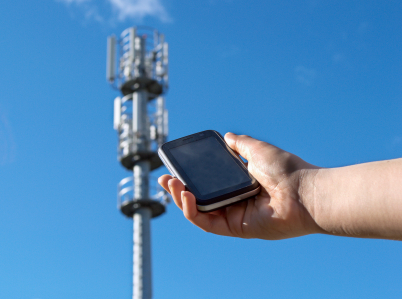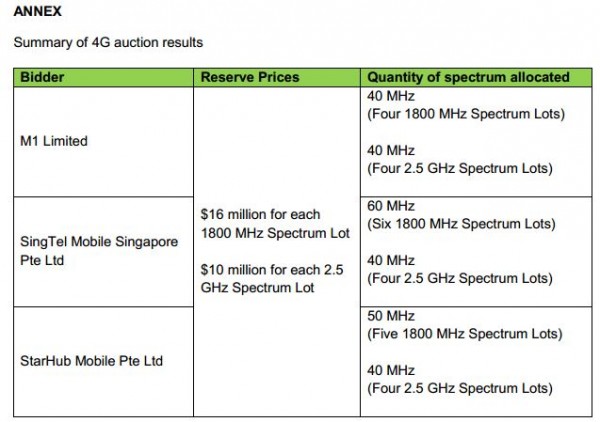
A new chunk of the airwaves has been allocated to SingTel, StarHub and M1 to run their 4G services, after the three telecom operators paid a combined S$360 million for the right to use the 1,800MHz and 2,500MHz frequency bands in a recent auction.
This gives them more capacity in the sky – 270MHz of it – to deploy their 4G services, as millions of users take up a small part of the airwaves each day to update their Facebook statuses or send e-mails back to the office.
Singapore’s Big Three telcos were the only bidders and winners in the auction, which will give them the use of the frequency spectrum from 2015 to 2030. The auction was held because current rights, offered in 2005 and 2007, are expiring in the next few years.
On winning the bids this round, the three telcos will have to provide nationwide street-level coverage for 4G by June 2016, and coverage for MRT underground stations and lines and road tunnels by June 2018, said the Infocomm Development Authority today.
The focus will now be on the specific segments of the spectrum that the telcos managed to get hold of.
They each secured four “lots” of spectrum in the 2,500MHz range. More importantly, in the more favoured 1,800MHz range, where signals more easily penetrate walls and can provide better coverage, SingTel has secured the most of the valuable resource in the sky. It has six lots to work with, compared to StarHub’s five and M1’s four.

Source: Infocomm Development Authority of Singapore
That may seem like an “even” result, considering that SingTel is the largest player, followed by StarHub and M1. However, what’s more interesting will be where these lots will exactly be allocated.
All three telcos will be keen to have a contiguous block of airwaves to work with (see the current allocation here). This is more convenient, as network equipment could be set up more easily.
Engineers from the telcos will focus particularly on the 1,800MHz band. This was originally allocated for 2G services and each telco will not want a rival to get hold of a block of spectrum they currently hold and force them to “move out” of it.
What happens next will be interesting, as the government regulator assigns each telco its slots in the airwaves in the coming months. Failing to get a favourable slot could result in some network re-configuration and add to a telco’s costs.
For users, more bandwidth for 4G means telcos have more capacity in the sky to roll out services, which is good news. Whether this will translate to better services, of course, still depends on how well telcos run their networks and take advantage of the additional bandwidth.






